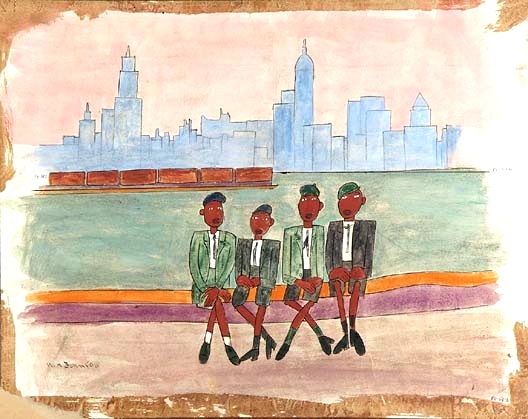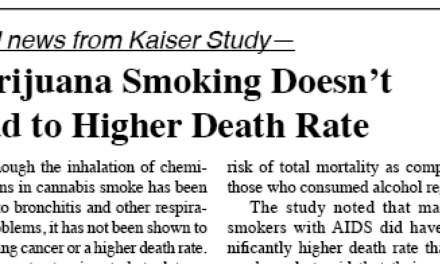This excerpt from The Marihuana Problem in the City of New York (informally known as “The LaGuardia Committee Report”) ran in O’Shaughnessy’s Summer 2010 with graphics by Wiiliam H. Johnson. (See note at bottom.)
Method of Retail Distribution
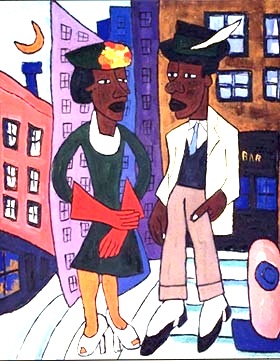 In general, marihuana is used in the form of a cigarette. Occasionally some individuals chew the “weed” and seem to get the same effect as do others through smoking. The common names for the cigarettes are: muggles, reefers, Indian hemp, weed, tea, gage and sticks. Cigarettes made of marihuana differ in size as do cigarettes made of tobacco: they are long, short, thick or thin.,
In general, marihuana is used in the form of a cigarette. Occasionally some individuals chew the “weed” and seem to get the same effect as do others through smoking. The common names for the cigarettes are: muggles, reefers, Indian hemp, weed, tea, gage and sticks. Cigarettes made of marihuana differ in size as do cigarettes made of tobacco: they are long, short, thick or thin.,
The “panatella” cigarette, occasionally referred to as “meserole,” is considered to be more potent than the “sass-fras” and usually retails for approximately 25 cents each. The hemp from which the “panatella” is made comes from Central and South America.
“Gungeon” is considered by the marihuana smoker as the highest grade of marihuana. It retails for about one dollar per cigarette. The “kick” resulting from the use of this cigarette is reached more quickly than from the use of “sassafras” or “panatella.” It appears to be the consensus that the marihuana used to make the “gungeon” comes from Africa. The sale of this cigarette is restricted to a clientele whose economic status is of a higher level than the majority of marihuana smokers.
A confirmed marihuana user can readily distinguish the quality and potency of various brands, just as the habitual cigarette or cigar smoker is able to differentiate between the qualities of tobacco. Foreign-made cigarette paper is often used in order to convince the buyer that the “tea is right from the boat.”
There are two channels for the distribution of marihuana cigarettes— the independent peddler and the “tea-pad.” From general observations, conversations with “pad” owners, and discussions with peddlers, the investigators estimated that there were about 500 “tea-pads” in Harlem and at least 500 peddlers.
A “tea-pad” is a room or an apartment in which people gather to smoke marihuana. The majority of such places are located in the Harlem district. It is our impression that the landlord, the agent, the superintendent or the janitor is aware of the purposes for which the premises are rented. The “tea-pad” is furnished according to the clientele it expects to serve. Usually, each “tea-pad” has comfortable furniture, a radio, victrola or, as in most instances, a rented nickelodeon. The lighting is more or less uniformly dim, with blue predominating. An incense is considered part of the furnishings. The walls are frequently decorated with pictures of nude subjects suggestive of perverted sexual practices. The furnishings, as described, are believed to be essential as a setting for those participating in smoking marihuana.
Most “tea-pads” have their trade restricted to the sale of marihuana. Some places did sell marihuana and whisky, and a few places also served as houses of prostitution. Only one “teapad” was found which served as a house of prostitution, and in which one could buy marihuana, whisky, and opium.
The marihuana smoker derives greater satisfaction if he is smoking in the presence of others. His attitude in the “tea-pad” is that of a 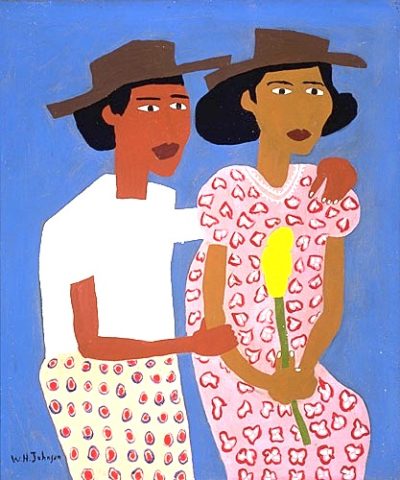 relaxed individual, free from the anxieties and cares of the realities of life. The “tea-pad” takes on the atmosphere of a very congenial social club. The smoker readily engages in conversation with strangers, discussing freely his pleasant reactions to the drug and philosophizing on subjects pertaining to life in a manner which, at times, appears to be out of keeping with his intellectual level. A constant observation was the extreme willingness to share and puff on each other’s cigarettes. A boisterous, rowdy atmosphere did not prevail and on the rare occasions when there appeared signs indicative of a belligerent attitude on the part of a smoker, he was ejected or forced to become more tolerant and quiescent.
relaxed individual, free from the anxieties and cares of the realities of life. The “tea-pad” takes on the atmosphere of a very congenial social club. The smoker readily engages in conversation with strangers, discussing freely his pleasant reactions to the drug and philosophizing on subjects pertaining to life in a manner which, at times, appears to be out of keeping with his intellectual level. A constant observation was the extreme willingness to share and puff on each other’s cigarettes. A boisterous, rowdy atmosphere did not prevail and on the rare occasions when there appeared signs indicative of a belligerent attitude on the part of a smoker, he was ejected or forced to become more tolerant and quiescent.
One of the most interesting setups of a “tea-pad,” which was clearly not along orthodox lines from the business point of view, was a series of pup tents arranged on a roof-top in Harlem. Those present proceeded to smoke their cigarettes in the tents. When the desired effect of the drug had been obtained they all merged into the open and engaged in a discussion of their admiration of the stars and the beauties of nature.
Because of the possibility of spreading disease, note should be taken of what seems to be a custom known as “pick-up” smoking. It is an established practice whereby a marihuana cigarette is lit and after one or two inhalations is passed on to the next person. This procedure is repeated until all present have had an opportunity to take a puff or two on the cigarette.
Occasionally a “tea-pad” owner may have peddlers who sell their wares in other localities and at the same time serve as procurers for those who wish to smoke marihuana on the premises.
One also finds other methods of retail distribution. After proper introduction, one may be able to purchase the cigarette in certain places. This is not an easy procedure, but it can be accomplished. In some bar-and-grills, restaurants, and bars our investigators were able to establish contact with someone who in turn, would introduce them to a peddler who apparently made regular rounds of these places in order to sell cigarettes. It appears that the owners of such places are not aware of this practice, and in many instances they would discharge any employee known to be directly or indirectly associated with the sale of marihuana.
On rare occasions public guides, if properly approached would refer one to a place where the “reefer” could be bought. There was no evidence that the guide received money when acting as go- between. Terminal porters, mainly Negroes, appeared to be more directly connected with the traffic of marihuana. They were more conversant with the subject and it was easier for them to establish contact between purchaser and peddler.
Marihuana smoking is very common in the theatres of Harlem according to the observations of the investigators. We have reason to believe that in some instances, perhaps few in number, employees actually sold cigarettes on the premises. In the Harlem dance halls smoking was frequently observed either in the lavatories or on the main floor. The patrons as well as the musicians were seen in the act of smoking. There was no evidence of sales being made by employees on the premises, or that there was any gain on the part of the owners or employees in permitting this practice. Whereas the smoking of marihuana was not encouraged, nothing was done to prohibit such practice.
There are specific sections in the Borough of Manhattan where the sale of marihuana cigarettes appears to be localized: 1) the Harlem district; 2) the Broadway area, a little east and west of Broadway and extending from 42nd Street to 59th Street. While it is true that one may buy the cigarette in other districts, it is not as easily obtainable as in the two localities mentioned.
The consensus of marihuana users is that the drug is not harmful and that infrequent or constant use of marihuana does not result in physical or mental deterioration.
The Mental Attitude of the Marihuana Smoker Toward Society
Most of the smokers of marihuana coming within the scope of our survey were unemployed, and of the others most had part-time employment.
Occasional, as well as confirmed, users were all aware of the laws pertaining to the illegal use of the drug. They did not indulge in its use with a spirit of braggadocio or as a challenge to law as has been reported by some investigators in other districts. They did not express remorse concerning their use of marihuana, nor did they blame this habit as a causative factor in the production of special difficulties in their personal lives. Except for musicians there appeared to be no attempt at secretiveness on the part of the habitual smoker. This attitude is in marked contrast to that usually taken by those addicted to morphine, cocaine, or heroin.
The consensus of marihuana users is that the drug is not harmful and that infrequent or constant use of marihuana does not result in physical or mental deterioration.
In describing the most common reaction to the drug they always stated that it made them feel “high.” Elaboration of just what the smoker meant by “high” varied with the individual. However, there was common agreement that a feeling of adequacy and efficiency was induced by the use of marihuana and that current mental conflicts were allayed. Organic illness was not given as a cause for smoking “reefers.”
A person may be a confirmed smoker for a prolonged period, and give up the drug voluntarily without experiencing any craving for it or exhibiting withdrawal symptoms. He may, at some time later on, go back to its use. Others may remain infrequent users of the cigarette, taking one or two a week, or only when the “social setting” calls for participation. From time to time we had one of our investigators associate with a marihuana user. The investigator would bring up the subject of smoking. This would invariably lead to the suggestion that they obtain some marihuana cigarettes. They would seek a “tea-pad,” and if it was closed the smoker and our investigator would calmly resume their previous activity, such as the discussion of life in general or the playing of pool. There were apparently no signs indicative of frustration in the smoker at not being able to gratify the desire for the drug. We consider this point highly significant since it is so contrary to the experience of users of other narcotics. A similar situation occurring in one addicted to the use of morphine, cocaine, or heroin would result in a compulsive attitude on the part of the addict to obtain the drug. If unable to secure it, there would be obvious physical and mental manifestations of frustration. This may be considered presumptive evidence that there is no true addiction in the medical sense associated with the use of marihuana.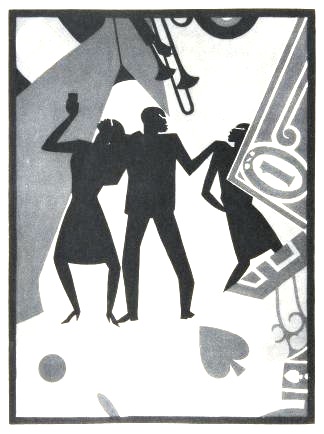
The confirmed marihuana smoker consumes perhaps from six to ten cigarettes per day. He appears to be quite conscious of the quantity he requires to reach the effect called “high.” Once the desired effect is obtained he cannot be persuaded to consume more.
He knows when he has had enough. The smoker determines for himself the point of being “high,” and is ever conscious of preventing himself from becoming “too high.”
He knows when he has had enough. The smoker determines for himself the point of being “high,” and is ever conscious of preventing himself from becoming “too high.” This fear of being “too high” must be associated with some form of anxiety which causes the smoker, should he accidentally reach that point, immediately to institute measures so that he can “come down.” It has been found that the use of such beverages as beer, or a sweet soda pop, is an effective measure. Smokers insist that “it does something to the stomach” and that it is always associated with “belching.” A cold shower will also have the effect of bringing the person “down.”
Smokers have repeatedly stated that the consumption of whisky while smoking negates the potency of the drug. They find it is very difficult to get “high” while drinking whisky, and because of that smokers will not drink whisky while using the “weed.” They do, however, consume large quantities of sweet wines. It is their contention that this mild alcoholic beverage aids the drug in producing the desired effect. Most marihuana smokers insist that the appetite is increased as the result of smoking.
We have been unable to confirm the opinion expressed by some investigators that marihuana smoking is the first step in the use of such drugs as cocaine, morphine, and heroin. The instances are extremely rare where the habit of marihuana smoking is associated with addiction to these other narcotics.
Marihuana and Eroticism
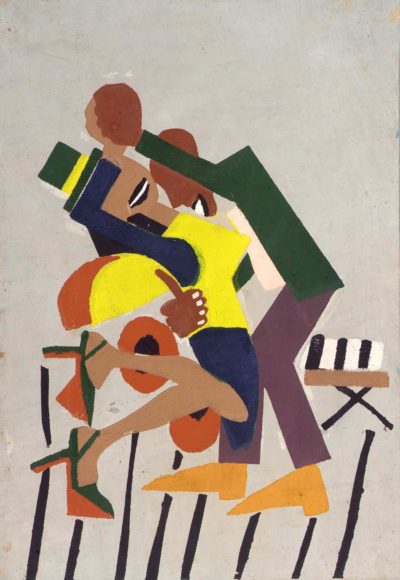 In the popular agitation against the use of marihuana, its erotic effects have been stressed repeatedly. As previously stated in this report, our investigators visited many “tea-pads” in the Borough of Manhattan. It is true that lewd pictures decorated the walls but they did not find that they were attracting attention or comment among the clientele. In fact one of the investigators who was concentrating his attention on the relation between marihuana and eroticism stated in his report that he found himself embarrassed in that he was the only one who examined the pictures on the wall.
In the popular agitation against the use of marihuana, its erotic effects have been stressed repeatedly. As previously stated in this report, our investigators visited many “tea-pads” in the Borough of Manhattan. It is true that lewd pictures decorated the walls but they did not find that they were attracting attention or comment among the clientele. In fact one of the investigators who was concentrating his attention on the relation between marihuana and eroticism stated in his report that he found himself embarrassed in that he was the only one who examined the pictures on the wall.
Numerous conversations with smokers of marihuana revealed only occasional instances in which there was any relation between the drug and eroticism. At one time one of our investigators attended a very intimate social gathering in an apartment in Harlem, having succeeded in securing the position of doorman for the occasion.
There was a great deal of drinking, and the dancing was of the most modern, abandoned, “jitter-bug” type. This form of dancing is highly suggestive and appears to be associated with erotic activity. The investigator made careful observation of those who were dancing, and found that there was no difference between the ones who were and the ones who were not smoking “reefers.” Similar impressions were received after careful observations in public dance halls, places where they knew that some persons were under the influence of marihuana.
Visits to brothels which occasionally also served as “teapads” revealed that the use of marihuana was not linked to sexuality. These observations allow us to come to the conclusion that in the main marihuana was not used for direct sexual stimulation.
William H. Johnson was among the foremost painters of African-American life during the Harlem Renaissance… In 1938, assigned by the government’s Works Progress Administration to teach at the Harlem Community Art Center, Johnson became immersed in the sights, sounds, and people of New York’s African-American community, which he captured in compositions of flat shapes, patterned designs, and brilliant colors that were distinctly modernist in their simplicity and directness. He took up screenprint and pochoir, techniques that suited his new embrace of simplified forms and bold colors. He printed these works on assorted found papers and often completed his images by hand with tempera, making each print slightly different from the next.” From Deborah Wye, Artists and Prints: Masterworks from The Museum of Modern Art, New York: The Museum of Modern Art, 2004, p. 220

